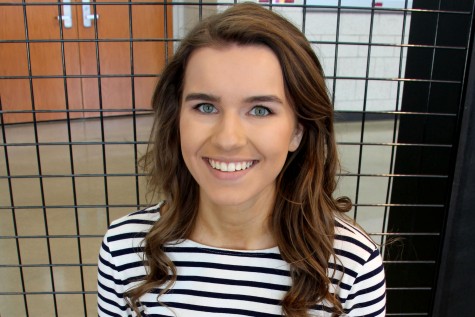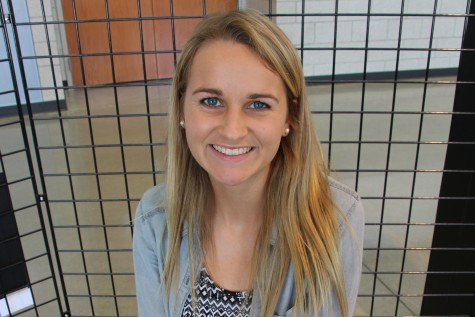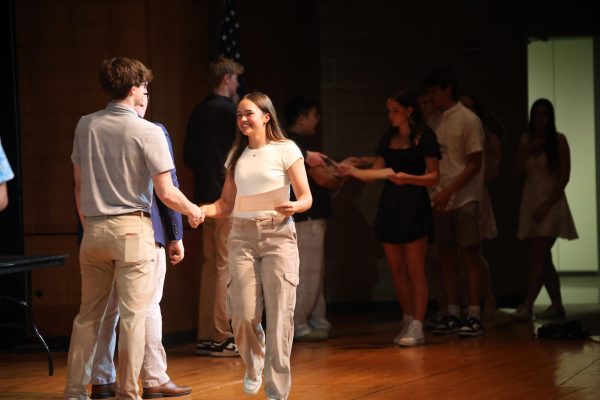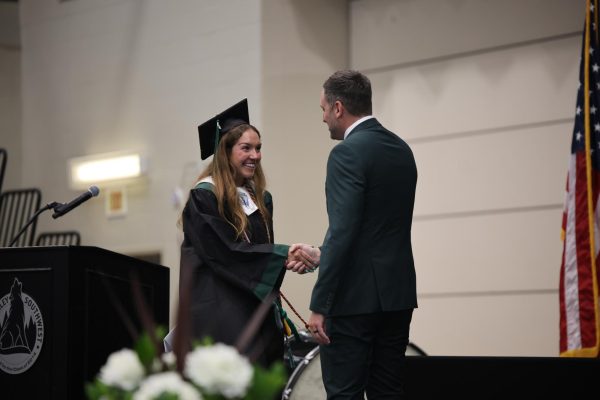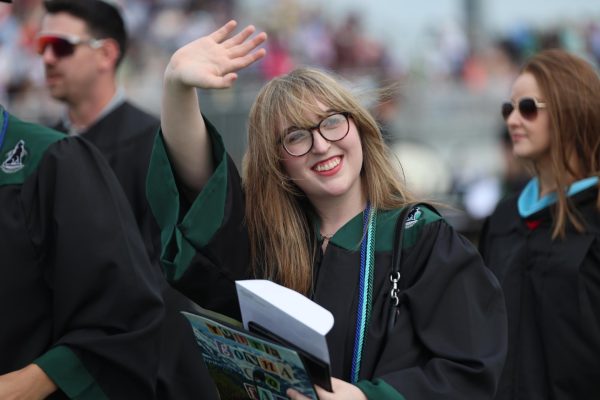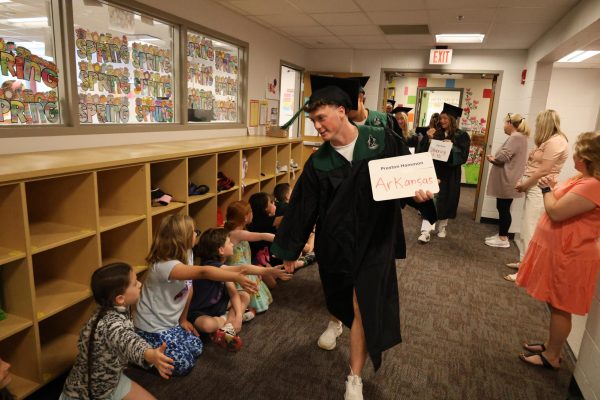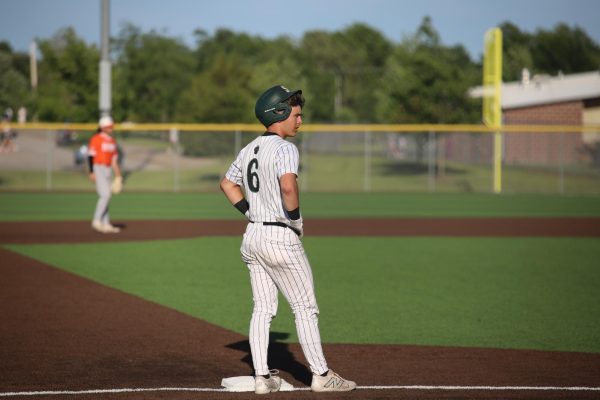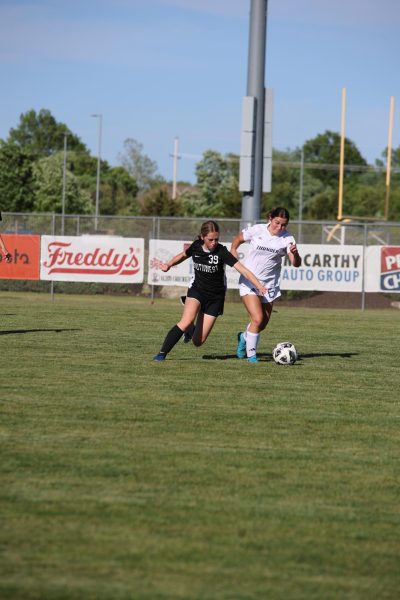Lack of state funding threatens public schools
When junior Abby Fry turned in her senior year enrollment form, she didn’t feel any certainty in her classes for the upcoming school year. While she debated challenging herself by adding both AP Biology and AP Physics 2 to her course load, she was ultimately met with a more imminent concern — whether or not school would open in the fall.
In February, the Kansas Supreme Court ruled the new funding formula for public schools did not provide equitable funding for all socioeconomic levels of school districts in the state. The court stated the Kansas legislature had until June 30 to pass a new funding formula that meets both the adequate and equitable funding standards, as outlined in the Kansas Constitution. Otherwise, schools would not open for the 2016-2017 school year. The court criticized the new block grant method’s heavy reliance on raised property taxes as being biased against poorer districts. The block grant formula was designed to replace a decades-old funding method that allocated money to schools based on the number of students and the profile of students in the district.
“I would be pretty disappointed in the failure of legislatures in Topeka because I think you have to try pretty hard to mess up that badly,” Fry said. “I honestly think it would significantly complicate an admissions process to any university because how do you explain that you didn’t attend school for part of the semester or, ‘Why are you now attending a community college as opposed to your home high school?’ That’s a complicated thing to explain to someone on an admissions application.”
On April 7, governor Sam Brownback announced he had signed a bill enacting a new funding formula for the upcoming school year. School districts would receive the same amount of money previously allocated, with 23 school districts receiving increased funding from an emergency reserve. District representatives from Blue Valley and Shawnee Mission voiced support for the bill. However, representatives from Kansas City, Kansas and Wichita criticized the bill for its continued reliance on property taxes and not addressing the increased need for funding in school districts such as Wichita, which has a projected cost increase of between $16 million and $30 million for the next fiscal year. The bill only addresses funding for the 2016-2017 school year and leaves funding for future school years to be determined.
“Long term, there’s got to be a larger discussion about what education looks like in the 21st century, how much it’s going to cost and how we’re going to pay for it,” deputy superintendent Mike Slagle said. “The formula we’ve just come out of is a 1992 formula. We didn’t have technology back then. We didn’t have a lot of drivers of education. We didn’t have a lot of things that we do now that we need to make sure kids are ready for, so I think we need to think about what kids need now and how we’re going to pay for that.”
After major tax cuts were enacted in 2012, Kansas began to see an annual decrease of between $250 and $400 million in revenue used to fund transportation, schools and other public establishments. Slagle said Kansas is currently at a breaking point where the state cannot legally enter into a new fiscal year with a budget requiring more money than the state brought in the previous year. This situation is only expected to worsen, as state revenue projections over the next several months are likely to miss their projections by $50 to $100 million each month.
As Blue Valley has been feeling the pinch from budget shortfalls, it has used funds in reserves from previous fiscal years, contracted district transportation services to private companies, cut salary raises, increased activity fees and lessened the quality of healthcare plans. While Slagle said these changes haven’t been particularly noticeable to the Blue Valley community, future budget uncertainty may bring more robust cuts.
“If we’re forced to go to a budget reduction strategy again, I think it’s going to have to impact the classroom,” Slagle said. “I don’t know in what way yet, but parents and our patrons are going to feel that differently than they’ve felt in the past. Four or five years ago, we had to cut $11 million out of our budget. We were able to do that without impacting the classrooms very much. If we’re forced to cut another $11 million in the future, the classrooms will be a part of that equation unfortunately.”
Social studies teacher and Kansas National Education Association (KNEA) building representative Mike Hardin said the concern among KNEA members isn’t as much the funding for the upcoming school year, but the possibility of budget cuts in coming school years. He said while budget cuts will have an impact in Blue Valley, due to the district’s strong parent base, the severity of cuts will be more profound in poorer districts
“We have a really good parent community that supports the school system really heavily, which is critical,” Hardin said. “Blue Valley is also fortunate enough to be in a well-off area, so for us, an impact to state funding does hurt. It’s less things we can do academically; it’s less opportunities to enhance technology; it’s less field trips. But the impact will be much greater in rural or urban schools where funding is not as plentiful and where the tax base isn’t as high.”
Although Blue Valley hasn’t officially decided what sort of reallocations must be made next year to meet budget shortfalls, Fry said the first classes to be affected would most likely be elective, music and performing arts classes. As a member of the school’s nationally-recognized debate team, Fry said the school helps finance much of the team’s travel costs and overnight trips to tournaments hosted across the country. Fry said a decrease in funding could limit the team’s competitive potential.
“I think if we do lose a significant amount of state funding, some of the money we use to support our band, choir, debate and all the performing arts may have to be reallocated to basic functions to keep the doors open,” Fry said. “That’s obviously more important, but it also means taking services away from students, which is obviously not the desired result of attending school.”
Mother of junior Olivia Swyers and senior Sydney Swyers and Olathe East English teacher Gretl Swyers said she started noticing effects from inadequate funding two years ago. If Swyers needs supplies for her classroom, she no longer can go to a storeroom and instead has to submit a form to the office where secretaries will assess the availability and necessity of the supplies. But more severely, this past year Olathe East excessed four teachers. Even though Swyers has taught at the school for six years, because she is the newest teacher in the English department, she is the next teacher to be excessed.
“It hurts morale if your teaching staff knows that they’re the first place you go to cut,” Swyers said. “When teachers realize it’s not about what they do or what they bring to the table, but it’s about how many years you have in the game, that just affects morale. It has nothing to do with merit — it has everything to do with how many years you’ve been doing it, and that’s a big problem in education.”
With teachers in the Olathe School District already instructing classes of up to 35 students, Swyers said excessing teachers will only make the issue of overpopulated classrooms worse. She said in order to continue to provide students a quality education, school districts should cut administrative positions and encourage more parent involvement in making administrative decisions.
“We need to start top down cutting some people,” Swyers said. “Quit taking away English jobs and history jobs and math jobs when we’re only making about $40,000; yet the average administrative salary is probably around $70,000. Teachers have more to do with kids than administrators do, so if you’re really worried about the effect on kids, why aren’t we getting rid of one administrator before getting rid of two teachers?”
In the last state legislature election, less than 20 percent of eligible voters participated. Slagle said during times when funding for public education is in jeopardy, it’s important parents are aware of and involved in education policy decisions. With primaries and general elections for state legislature members to be held in August and November, respectively, Slagle said parents need to be politically active to ensure students can continue to receive a quality education.
“There’s a lot of policy decisions that have been made over the past four or five years that are affecting our ability to provide a quality education system like we’ve provided in the past,” Slagle said. “It’s election year for the legislature. I would just want [parents] to become informed because they might find that policies are to their liking right now, or they may find that their policies aren’t. I think it’s a head scratcher to have less than 20 percent of people vote in our election, and there’s some improvement that could be done there.”
Fry said her mother’s involvement in Stand Up Blue Valley, an organization of parents whose goal is to educate voters about issues that impact schools, has caused her to take notice of the importance of being knowledgeable about education policies in the legislature. Despite the education funding crisis making national news, Fry said she doesn’t think many students are aware of the situation’s severity. Even though many high school age students aren’t old enough to vote, Fry said it’s still important that students are aware of the officials in the state legislature and the policies they’re creating.
“The choices that other people are making could end up having a very direct impact on your education, which even if the doors close for a little bit, not at all or there’s a small change in funding, that could impact what teacher you have in the classroom or how you apply to college,” Fry said. “I don’t think a lot of people know that this is a potential impact of failure on the part of the people in Topeka.”


